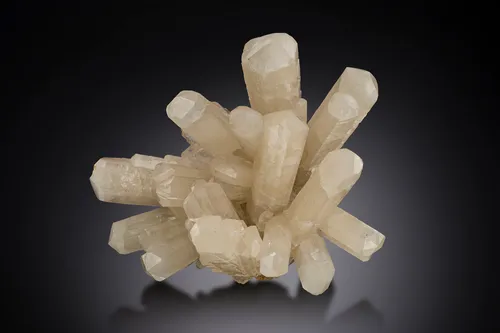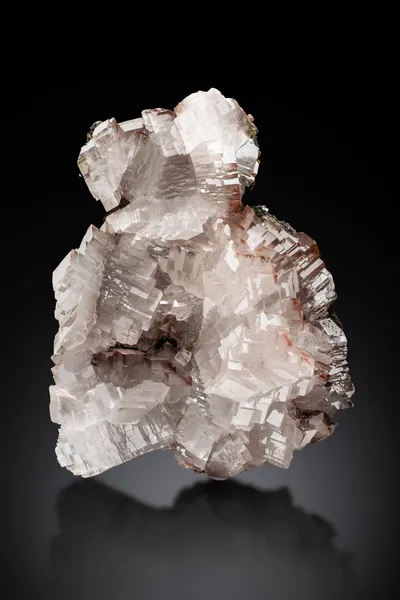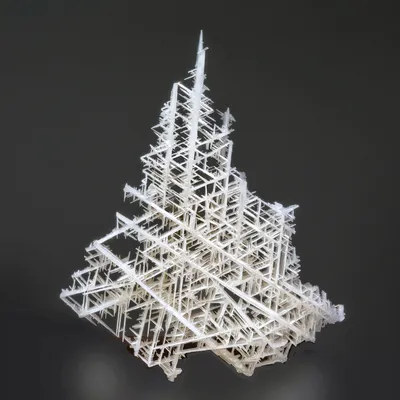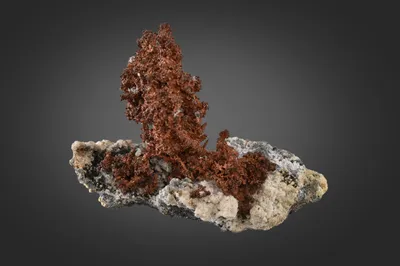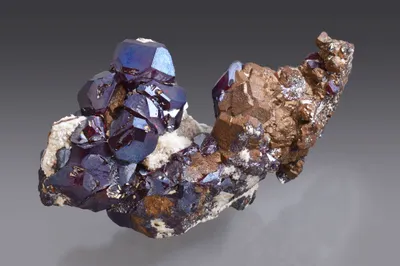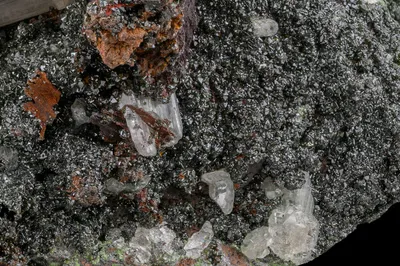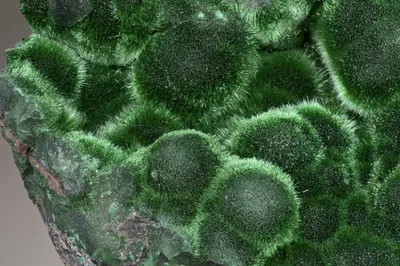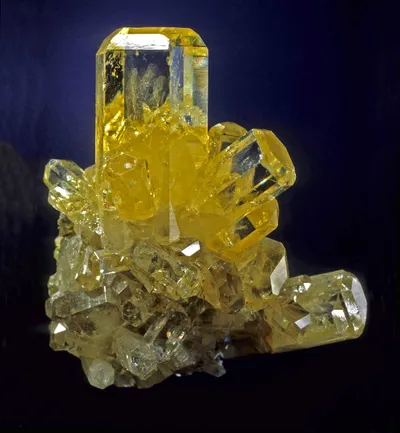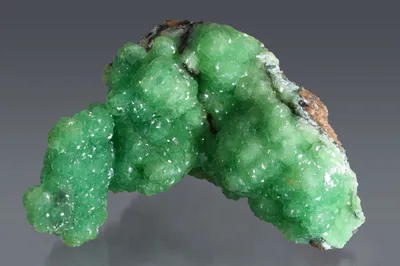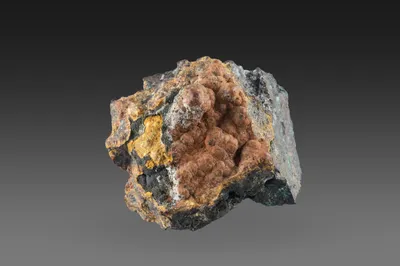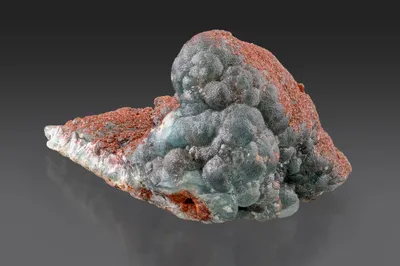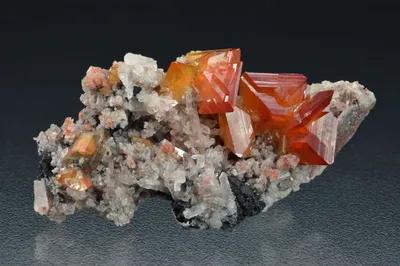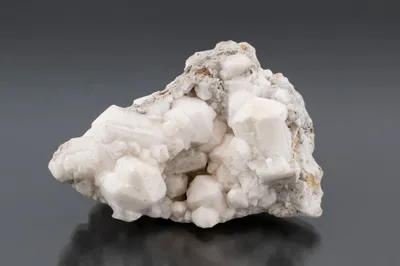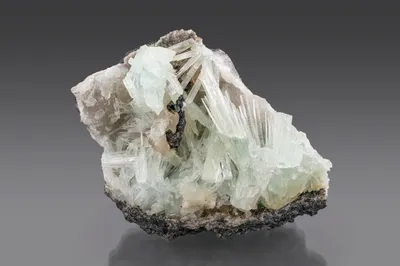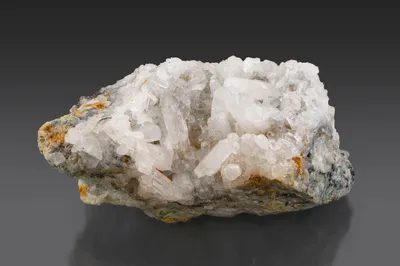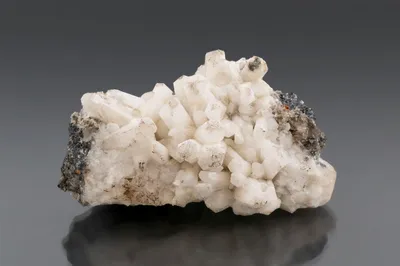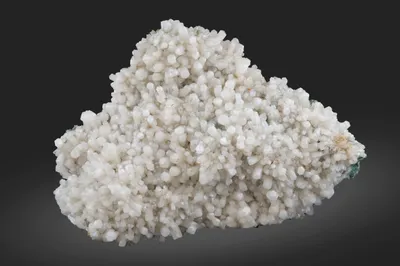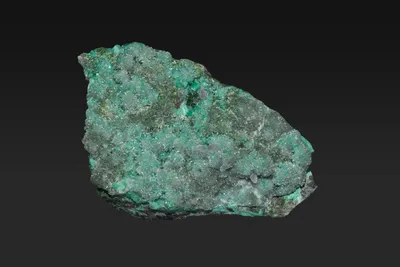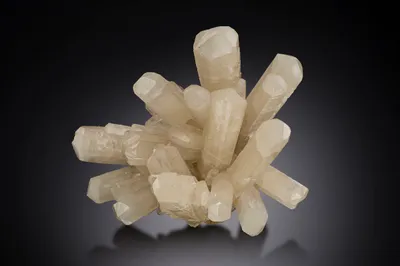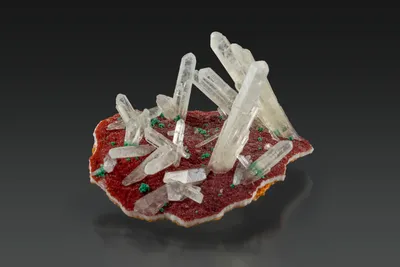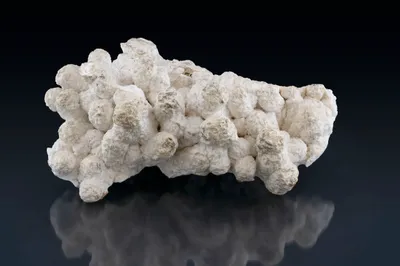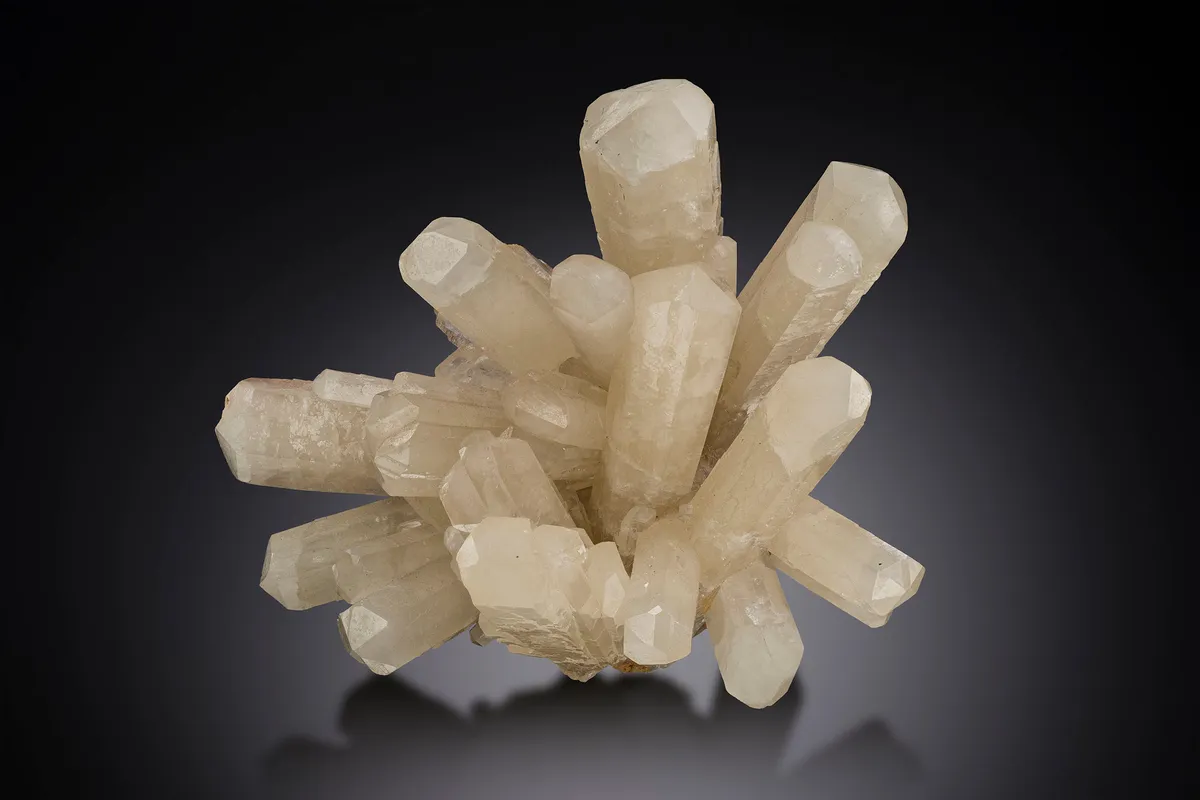
Image Credit: Jeff Scovil
Mineral Species
Aragonite
Type Locality
No
Crystal System
Orthorhombic
Status at Tsumeb
Confirmed
Abundance
Common
Distribution
First, second and third oxidation zones
Paragenesis
Supergene; post-mining
Entry Number
Species; TSNB20
General Notes
Aragonite is a common mineral at Tsumeb, though very much less abundant than its trigonal polymorph calcite, which enjoys a much wider stability range (Klein and Dutrow 2007). Almost invariably at Tsumeb, aragonite is a late-forming mineral in carbonate-dominated parageneses and most specimen material, with one notable exception, is from the first oxidation zone. Klein (1938) reported that fine specimens with large crystals were encountered between depths of 220 meters (8 Level) and 400 meters (14 Level). The most commonly associated minerals are malachite, smithsonite and cerussite.
The following varieties of aragonite occur at Tsumeb:
- "Pure" aragonite is relatively uncommon. It occurs as colourless to slightly greenish to bluish needles and only rarely as dull, prismatic, pseudo-hexagonal crystals (Pinch and Wilson 1977).
- Tarnowitzite, containing up to 7.5 wt % PbO is very much more abundant than either "pure" aragonite or nicholsonite; most specimens of Tsumeb aragonite are lead-bearing (O’Daniel 1930). Crystals are typically white to ivory-white or cream-coloured, elongated pseudo-hexagonal trillings to several centimetres in length with pyramidal terminations (Bartelke 1976; Pinch and Wilson 1977). The crystals are commonly tapered from a narrower base to a slightly wider termination.
- Nicholsonite, the zinc-bearing variety of aragonite, is much less common than tarnowitzite but reasonably well-represented (though sometimes mis-identified) in early (pre-1930) collections. Typically, nicholsonite resembles tarnowitzite in habit, but sometimes with a buff-cream or very pale bluish-green tint. According to Pinch and Wilson (1977) Tsumeb nicholsonite "… can contain up to 10 % ZnCO3"; unfortunately, they do not provide the source of this information.
- Aragonite of anthropogenic origin, precipitated from percolating ground water and forming masses on the walls of underground mine developments. A spectacular example of mammillary (or sub-botryoidal) turquoise-blue aragonite "flowstone" of post-mining origin, presumably coloured by copper, occurred on 28 Level in the second oxidation zone and is figured by Gebhard (1999; page 150).
Excellent specimens of the lead-bearing variety tarnowitzite, and the zinc-bearing variety nicholsonite were recovered from the first oxidation zone, with many of the finest to be found in early collections from before WWII.
There is circumstantial evidence that such aragonite specimens in early Tsumeb collections were designated as nicholsonite on the basis of specific gravity determination, whereby a value higher than for pure calcium carbonate was often attributed to an assumed presence of zinc but generally without analytical confirmation. As a result, many early collections include specimens of lead-bearing aragonite that are erroneously labelled as ‘nicholsonite’. The occurrence of lead-bearing tarnowitzite at Tsumeb was first described by O'Daniel (1930) and it is notable that post-1930 collections are well-endowed with specimens labelled as ‘tarnowitzite’, but relatively deficient in material identified as ‘nicholsonite’.
O’Daniel (1930) gave the first thorough description of tarnowitzite from Tsumeb, providing detailed crystallographic data and two chemical analyses which yielded an average PbO content of 5.23 wt %. He showed that crystals of tarnowitzite are not homogeneous but zoned, with layers of varying lead content. He considered, however, that the lead occurred as an isomorphous substitution for calcium to varying degrees within each layer.
Siegl (1938) built on the work of O’Daniel (1930) to propose that the lead content of Tsumeb tarnowitzite can be explained partly by isomorphous substitution of lead for calcium and partly by the presence of minute inclusions of cerussite, the abundance of which varies between layers in the zoned crystal structures. He showed that both the specific gravity and the refractive index increase as a function of lead content.
Goñi et al. (1965) studied tarnowitzite from Tsumeb containing 7.5 wt % PbO using electron microprobe techniques and showed that the majority of the lead is in the form of dispersed cerussite inclusions in the order of 1 µm in size. They considered that the amount of PbCO3 in solid solution in the aragonite is extremely low, in the order of 0.1 mol % PbCO3.
Strunz (1966; cited by Bartelke 1976) noted the occurrence of cerussite crystals growing epitaxially on tarnowitzite; Strunz’s crystal drawing is reproduced by Bartelke (1976; page 419).
Strunz and Tennyson (1967) described tarnowitzite from the first oxidation zone as "… aragonite with oriented intergrown cryptocrystalline cerussite." They included both aragonite and tarnowitzite as separate entries in their list of second oxidation zone minerals but without further elaboration.
Bartelke (1976) described pale turquoise radiating masses of aragonite composed of slender, elongated prismatic crystals. He also commented on plumboan aragonite (= tarnowitzite), describing trillings in the form of pseudo-hexagonal prisms up to several centimetres in length with pyramidal terminations. Occasionally the prisms are absent resulting in stout pseudohexagonal bipyramids.
Pinch and Wilson (1977) noted that tarnowitzite is "… much more common than pure aragonite at Tsumeb".
Key (1977) noted that "Two varieties [of aragonite] reach their zenith at Tsumeb: tarnowitzite and nicholsonite, the Pb and Zn varieties. Light blue divergent clusters of cupriferous (?) aragonite to 3 x 7 inches are standards for the world as well."
Lombaard et al. (1986) considered aragonite a "moderately common" mineral at Tsumeb.
Gebhard (1999) reported that a few groups of pale blue copper-bearing aragonite crystals were recovered from the upper levels in 1995, shortly before the mine closed.
An overview of the occurrence of aragonite at Tsumeb has been provided by Cairncross and Southwood (2023).
Associated Minerals
azurite; calcite; cerussite; copper; cuprite; dolomite; duftite; linarite; malachite; mimetite; mottramite; plancheite; quartz; smithsonite; tsumcorite; willemite; wulfenite
Pseudomorphs
The following minerals have been reported to form pseudomorphs after aragonite: malachite (rare); smithsonite (rare).
